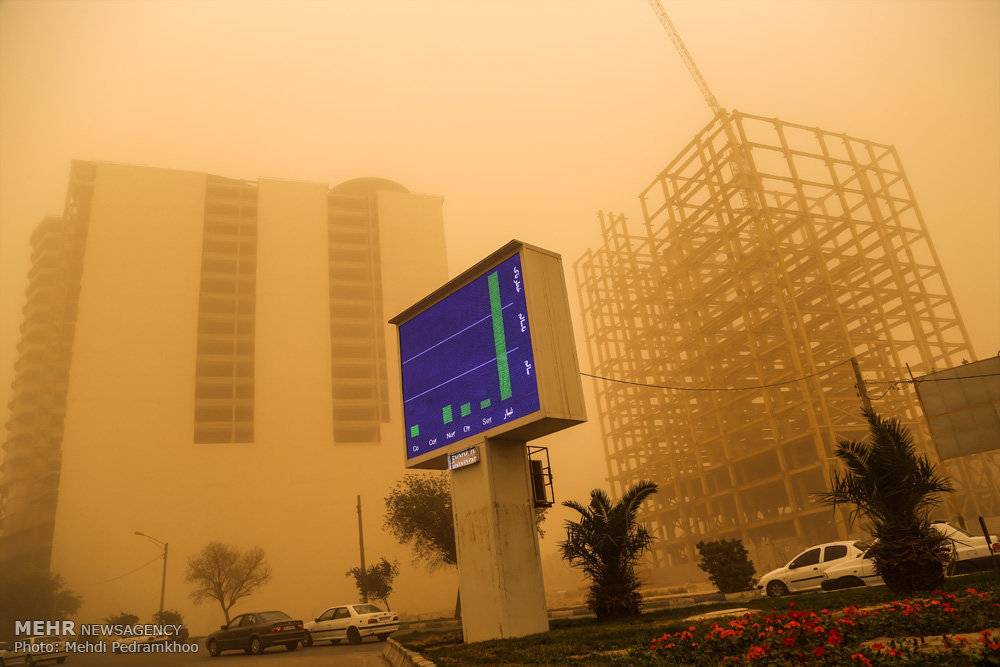Dusty Khuzestan still in tight spot, out of breath

TEHRAN — Once again the old story of recurrent sand and dust storms in the southwestern province of Khuzestan is going around. For some years now elevated levels of PM 2.5 fine particles, tens of times above the standard average, is the new normal for the province.
This week the area is yet again hit by another strong sand and dust storm. According to the provincial officials the concentration of the fine particles have reached some 9,000 micrograms per cubic meter while according to the United States Environmental Protection Agency (EPA) the short-term standard (24-hour or daily average) is 35 micrograms per cubic meter of air.
Ahmad Joneidi, an official with Ministry of Health, has explained that the current unwelcomed fine particles are originating from external hotspots in neighboring countries are smaller in diameter so that they are more detriment to citizens’ health, IRNA news agency reported on Wednesday.
Khuzestan provincial chief of department of environment, Ahmadreza Lahijanzadeh, has told Fars news agency that drought spells as well as low precipitation in the area has exacerbated the situation.
The average precipitation level have decreased to two millimeters while it amounted to 220 to 250 millimeters in the past, Lahijanzadeh regretted.
On the same subject Mohammad Ali Tahmasbi, head of national project for fighting sand and dust storms, has said that average precipitation amounts have dropped by 60 percent this year (March 2017-March 2018) compared to the corresponding period last year.
MP Abbas Papizadeh also regretted the fact that some 22 provinces of Iran are affected by sand and dust storms and the fact that administrations is not seriously following up the issue and allocating limited budget to tackle it is worsening the situation. “This way the situations won’t improve in the next 10 years,” IRIB qouted Papizadeh as saying.
He further explained that while the province of Khuzestan is struggling with the sand and dust storm for 16 years the administration has just started addressing the issue since last year.
Despite the United Nations 2002 report warning about the future of the Khuzestan, no one bothered to take it seriously, he lamented.
Two years ago the bodies were reluctant to accept the fact that Khuzestan is dealing with a crisis which has internal sources, while now it is obvious that some of the sand and dust storms are originating from internal hotspots, he added.
Mismanagement of water resources as well as building numerous dams have intensified the current situation, he said, adding, some 80 percent of the oil revenues comes from the province of Khuzestan, it is only fair to spend some of it on the province to fight the destructive storms.
Hotspots for sand and dust storms (SDS) developed around Ahwaz, the capital of Khuzestan, cover more than 350,000 hectares of land.
The administration has started planting trees in the region to stabilize the soil and prevent further SDSs in a long run. The officials claim that some 30,000 hectares of SDS hotspots will be covered by tree planting programs till the end of the current [Iranian calendar] year (March 20). The required water for this project will be provided by Karun River through a pipeline.
MQ/MG
Leave a Comment